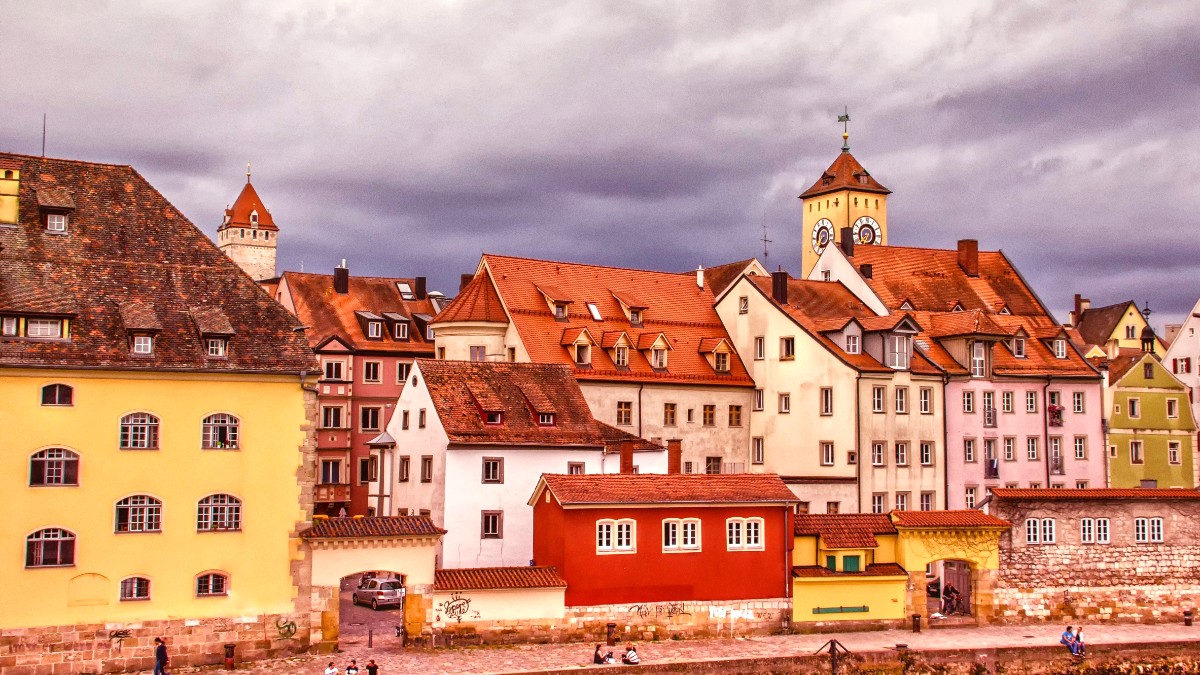
Bavaria, Germany
Regensburg occupies a strategic location at the northernmost bend of the Danube River, where the Regen River flows into it. This position, where the Bavarian Forest meets the fertile plains, contributed to its historical significance as a trade hub. The city forms the center of the Upper Palatinate region (Oberpfalz) in Bavaria, southern Germany.
Regensburg boasts a history stretching back to Roman times. In 179 AD, the Roman emperor Marcus Aurelius established Castra Regina, a legionary fortress, at this site. Remnants of this Roman past, including the Porta Praetoria, stay visible in the city center.
The city's wealth and political importance brought the construction of impressive buildings. The Regensburg Cathedral, begun in the 13th century, is a prime example of Gothic architecture in Bavaria. Patrician towers, built by wealthy merchant families, symbolize their power and influence.
Regensburg is a city of Roman roots, a powerful medieval trading center, and a former political hub of the Holy Roman Empire. The Old Town, an UNESCO World Heritage site, features narrow, winding streets, grand patrician houses, and historic squares. The iconic Stone Bridge, a medieval engineering marvel, connects the Old Town with Stadtamhof, offering superb views.
Regensburg provides numerous dining experiences, from hearty Bavarian fare at traditional breweries to international cuisine and fine dining. The city is famous for its "Regensburger Wurst," a local sausage. Accommodation options range from budget-friendly hostels to charming historic hotels and modern stays. Public transport, mainly buses, connects areas outside the walkable Old Town.
The city thrives with cultural events, especially during summer festivals and its beloved Christmas markets.
Day trips to the scenic Danube Gorge, Weltenburg Abbey, or nearby major cities like Nuremberg and Munich are easily arranged.
The city's compact nature permits enjoyable walking tours, making it an ideal destination for an authentic German experience.
Regensburg is a safe and welcoming city. It blends its preserved past with a lively, modern atmosphere, thanks in part to its university.
Visitors discover a deep sense of history, warm local culture, and many opportunities for exploration and relaxation.
Despite various wars and changes in political landscape, Regensburg’s Old Town survived World War II largely unscathed, preserving its medieval fabric. This remarkable preservation led to its designation as an UNESCO World Heritage site in 2006, recognizing its outstanding universal value.
The 12th century saw the construction of the Stone Bridge, a marvel of engineering that solidified Regensburg’s position as a valuable European trade hub. For centuries, this bridge provided the only crossing over the Danube for hundreds of kilometers.
From 1663 to 1806, the Perpetual Imperial Diet of the Holy Roman Empire met in Regensburg, making it a political center of Europe. This gathering of princes, electors, and city representatives shaped European politics for over 150 years.
The city today serves as a living museum, offering unparalleled insight into a thousand years of urban development and a testament to its enduring legacy as a cultural and political center. From Roman foundations to medieval power, and through periods of imperial influence, Regensburg’s past shapes its present, inviting visitors to explore its deep historical layers.
Regensburg experiences a temperate climate with distinct seasons. Each season presents a different atmosphere and set of activities. Your ideal timing depends on your preferences for weather, crowd levels, and specific events.
Winter brings cold temperatures, averaging -2 to 5°C (28-41°F). Snowfall is common, especially in December and January, creating a picturesque setting. Days are short. Humidity is higher due to cold air.
Temperatures rise from cool to mild, averaging 5-15°C. Moderate rainfall throughout the season. Comfortable humidity.
Warmest months, 15-25°C. Highest humidity. Thunderstorms can occur. Long daylight hours.
Temperatures cool from mild to brisk, 5-15°C. Moderate rainfall remains. Later autumn brings fog.
High Season (June-August, December for Christmas Markets) sees warmest weather for outdoor activities, all attractions open, a lively atmosphere, and numerous festivals. Expect higher prices for accommodation and flights. Attractions and popular areas become more crowded.
The official currency in Germany and throughout the Eurozone is the Euro (€, EUR).
ATMs (Geldautomaten) are widely available. They offer good exchange rates.
Major credit and debit cards are widely accepted. Smaller establishments may prefer or only accept cash.
Hostel dorm: €25-€40/night. Budget hotel: €50-€90/night. Mid-range hotel: €90-€150/night. Luxury hotel: €150+/night.
Street food: €3-€7. Budget meal: €10-€18. Mid-range meal: €18-€35. Fine dining: €40-€80+.
Cathedral: Free. Thurn und Taxis Palace: €15-€20. Walhalla: €4-€6. River Tour: €10-€15.